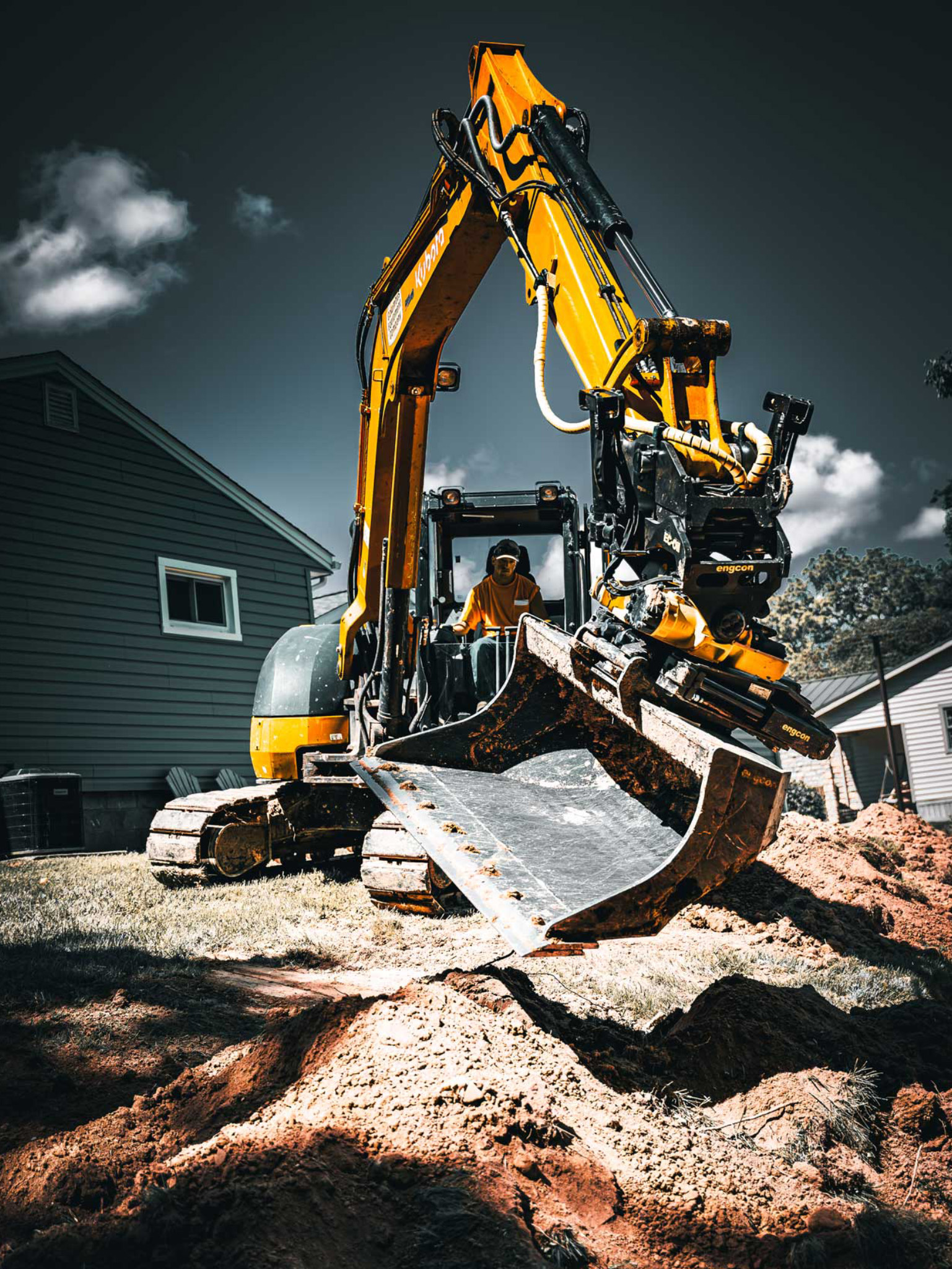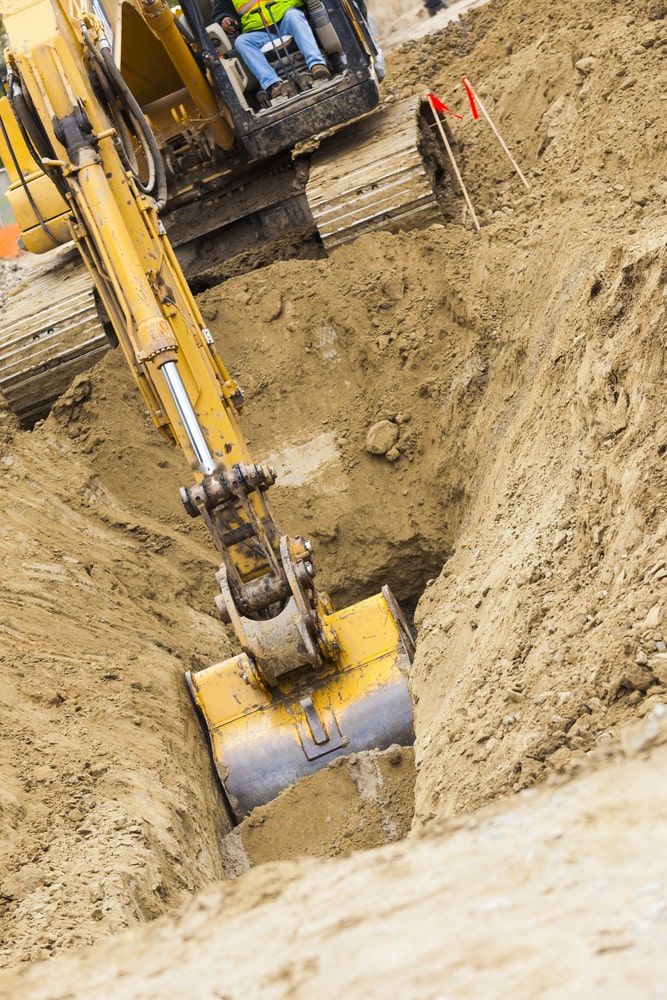Septic Ohio - Comprehensive Septic Tank Providers in Ohio
Septic Ohio - Comprehensive Septic Tank Providers in Ohio
Blog Article
Unveiling the Art of Excavation: Pro Tips for Safe and Effective Excavating
As soil is turned and earth is moved, the details of excavation disclose themselves, requiring a keen understanding of tools, soil structure, security protocols, and ecological factors to consider. The proficiency needed to navigate these components successfully can suggest the difference in between an effective excavation job and a prospective catastrophe.
Value of Proper Equipment
To make certain the security and effectiveness of any type of excavation job, making use of the proper tools is vital. The right devices not just improve efficiency but also minimize threats related to excavating. Excavation tasks differ in scope and complexity, ranging from small property landscape design jobs to large-scale building tasks. Regardless of the job size, having the proper devices can make a significant difference in the result.
These versatile machines come in different dimensions to fit different task requirements. Small excavators are optimal for smaller sized tasks, while larger excavators take on much more comprehensive tasks efficiently.
Apart from excavators, various other critical tools consists of dump excavators, plates, and vehicles. Dump trucks are essential for removing and moving excavated materials, while plates are used for excavating deep and slim trenches. Bulldozers excel in jobs that call for pressing big quantities of dirt or debris. By purchasing the appropriate tools, excavation jobs can be finished securely, on schedule, and with precision.
Recognizing Soil Composition
A thorough understanding of dirt make-up is essential for executing excavation tasks with precision and security. Understanding the different types of dirt is essential as it straight affects excavation approaches, devices option, and total job performance.
Sand fragments are the largest and supply great water drainage however provide little communication. Silt fragments are smaller sized than sand however larger than clay, providing moderate drain and communication. Clay bits are the tiniest and supply high cohesion but bad water drainage. Organic issue, such as decomposing plant material, affects soil fertility and stability.
Before beginning excavation, carrying out dirt tests to identify its structure and characteristics is crucial. This information aids in choosing the ideal devices, applying precaution, and developing excavation techniques tailored to the particular soil problems - excavating ohio. By comprehending dirt composition, excavation professionals can boost job end results while guaranteeing safety and security and adherence to finest practices
Precaution and Procedures
Recognizing dirt structure is the keystone upon which safety procedures and procedures for excavation tasks are developed, making sure the health of workers and the success of the undertaking. When it comes to safety and security throughout excavation, there are several vital steps that must be applied to minimize threats and protect against accidents.
Primarily, before any type of excavating begins, an extensive assessment of the site need to be performed to recognize any type of potential threats such as below ground energies, unstable soil problems, or close-by frameworks that can pose a threat. It is essential to have a proficient person manage the excavation process to make sure that all safety protocols are complied with strictly.
Moreover, all workers included in the excavation has to be correctly trained in risk-free excavating techniques and the appropriate procedure of tools. By adhering to these safety and security actions and procedures, excavation tasks can be finished successfully and without incident.
Effective Excavation Planning
When getting started on an excavation task, thorough preparation is necessary to make sure performance, security, and effective results. Effective excavation preparation involves numerous key steps that are important for the smooth implementation of the task. The primary step is to conduct an extensive website analysis to identify any potential threats, such as below check my site ground utilities or unstable soil conditions. This details is essential for establishing a comprehensive excavation plan that consists of safety actions and risk reduction methods.
As soon as the site analysis is full, the following action is to develop a clear timeline and timetable for the excavation activities. This consists of establishing the sequence of tasks, equipment demands, and manpower allotment. Correct organizing aids stay clear of hold-ups and makes sure that the task stays on track.

Moreover, communication amongst all staff member is vital throughout the planning stage. Clear directives, regular updates, and efficient sychronisation are crucial for an effective excavation project. By spending effort and time in meticulous preparation, excavation teams can dramatically improve efficiency, lessen dangers, and accomplish effective results.

Taking Care Of Environmental Factors To Consider
With boosting focus on environmental sustainability in building methods, managing environmental factors to consider has become a crucial element of excavation tasks. Excavation tasks have the possible to influence the surrounding atmosphere through soil erosion, sediment runoff, environment interruption, and contamination of water resources. To mitigate these threats, it is crucial to apply ideal methods that focus on environmental protection.

Additionally, proper waste management is essential to stop soil and water contamination. Implementing treatments for the disposal of harmful materials, recycling of waste materials, and decreasing making use of damaging chemicals can significantly minimize the ecological impact of excavation projects. By integrating these methods right into visit here excavation preparation and execution, building and construction business can make certain that their projects are not only safe and effective but additionally eco liable.
Conclusion
In conclusion, understanding the art of excavation requires an extensive understanding of appropriate equipment, dirt composition, safety procedures, and effective planning. By complying with these standards and taking into consideration environmental aspects, excavations can be carried out securely and effectively. It is useful site vital to focus on safety and security and performance in every excavating task to make certain successful outcomes.
As soil is turned and planet is moved, the intricacies of excavation disclose themselves, demanding an eager understanding of devices, dirt composition, safety and security protocols, and environmental factors to consider.To guarantee the security and efficiency of any excavation job, using the ideal tools is paramount.A detailed grasp of dirt composition is fundamental for performing excavation tasks with precision and safety and security. Recognizing the various kinds of soil is important as it directly influences excavation techniques, equipment option, and total task effectiveness. By understanding dirt composition, excavation specialists can boost project results while guaranteeing safety and security and adherence to best practices.
Report this page